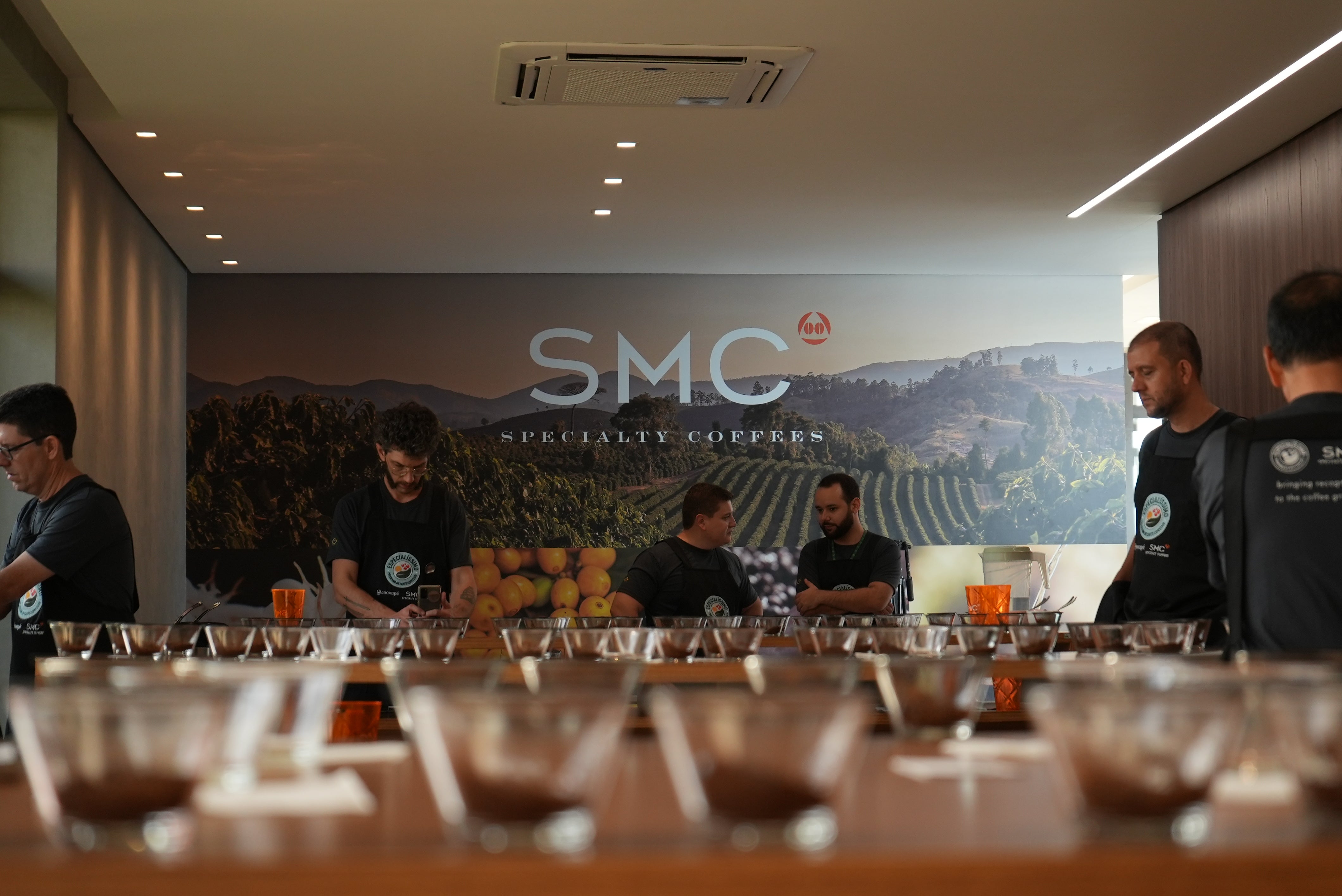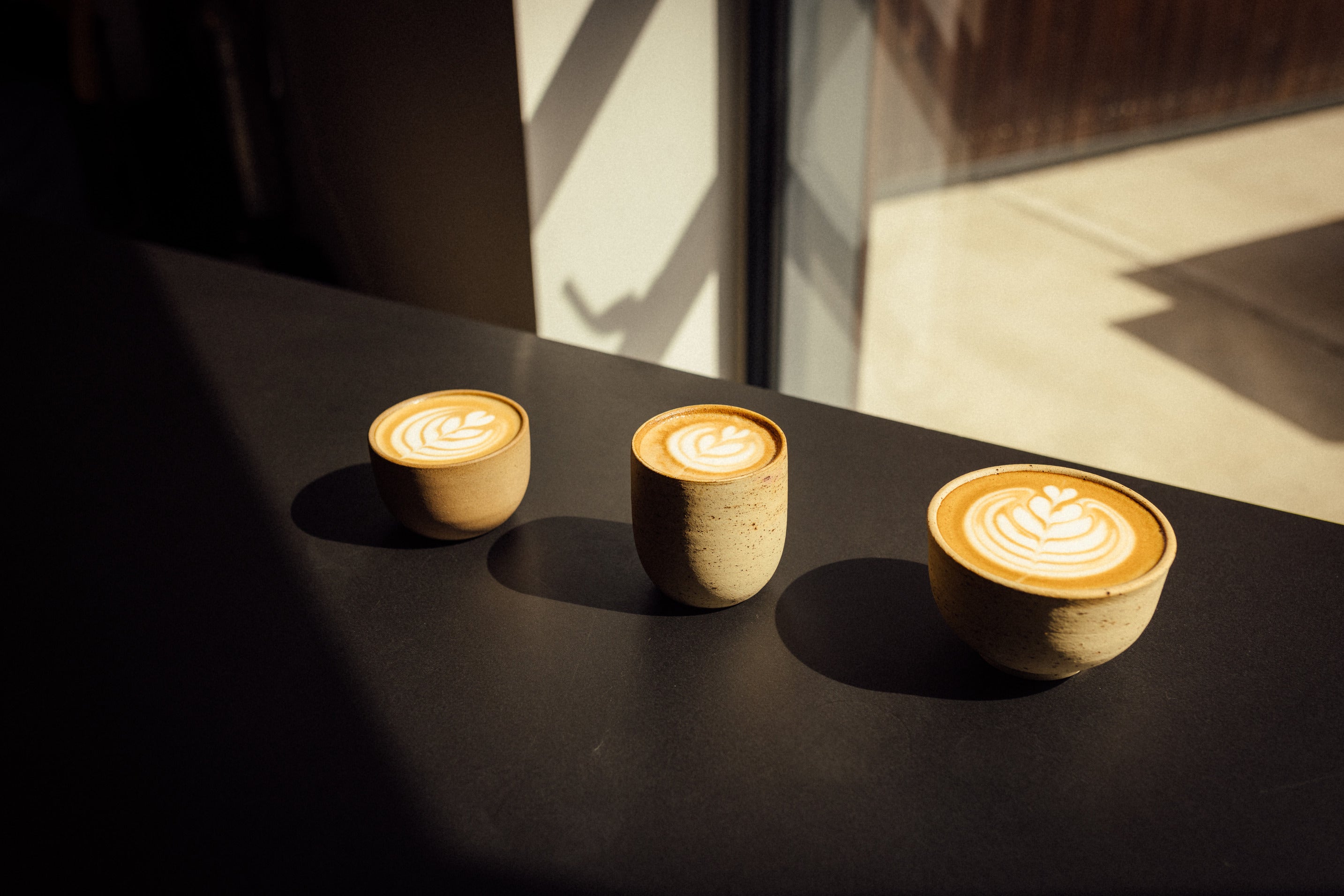There’s no denying Brazil’s influence on the global coffee scene. As the largest producer of coffee in the world, when a harvest year for the country goes well - or badly - the rest of the industry feels its effects.

Yet, despite the influence Brazil has, and the power it holds in the industry, when it comes to the country’s reputation for coffee production, there are many drinkers who have turned their nose up at Brazilian beans.
In this country profile, we look into Brazil’s coffee growing regions, harvesting techniques, and rich past. From the legend of how the plant first arrived - through to a time when it seemed that the country’s main trade might collapse–and how Brazil’s bold rebranding has helped reshape its identity while shaking up the speciality coffee scene.
HISTORY
If rumour is to be believed, Brazil’s introduction to coffee began with a secretive mission and a dose of seduction. In 1727, lieutenant colonel Francisco de Melo Palheta was sent to French Guiana under the guise of settling a border dispute. While the French had refused to share their coffee monopoly, the reputedly charming Palheta asked the Governor of Cayenne, who promptly refused. Not deterred, Palheta then tried his luck with the governor’s wife. A departing bouquet of flowers travelled back with Palheta–complete with hidden coffee beans.
Whichever way coffee travelled into the country, it came at a perfect time, replacing the country’s main export trade of sugarcane, which dwindled as the Caribbean’s production boomed. By the 1830s, coffee was Brazil’s largest export, accounting for 30 percent of world production.

The rapid development of coffee production transformed Brazil’s landscape, starting an era of wealth and progress, which laid the foundations of infrastructure for export, banking, industrialisation, rail, and roads. This boom between the 1800s and 1930s was named ‘café com leite’, meaning ‘coffee with milk’, owing to coffee and milk being the two leading money makers for the country respectively. Such wealth brought power to the owners of coffee plantations, enabling political and societal sway; these people even contributed to the proclamation of Brazil as a Republic (15th November 1889). Early coffee production, however, was, like many countries, dependent on slave labour. The abolition of slave industry (1888) changed the landscape as the government implemented new programmes to encourage immigrants to come and farm coffee. By the 1920s, Brazil had almost monopolistic control over the international coffee market, producing 80 percent of the global coffee supply.
Yet, with the Great Depression (1929) prices plummeted and trade diminished–so much so that bags of coffee were being burned. Thankfully, the country’s earlier investment in infrastructures meant other industries could flourish, adapting to the change in economic demand.
Today, just under 40 percent of all coffee is produced in Brazil; that’s around 3.7 million metric tons a year. Producers are increasingly invested in speciality coffee production, looking to shift the misconception that Brazilian coffee is only fit for supermarket shelves, and the staple of large corporation blends.
GROWING AND HARVESTING
While Brazil leads the ranks for coffee production, farmers face numerous challenges growing and harvesting crops. Growing at much lower elevations by comparison to other countries, producers not only have to work with lower than optimal altitudes and non-volcanic soils, but also extreme climate conditions, from drought, to frost.

When farmers enjoy a good harvest year in Brazil, a few might note better prices for purchasing; when farmers endure a hard year’s harvest, the world sits up. Such was the case in 2021, as severe frosts – the harshest in 50 years – bit down hard in four relentless rounds between June and July, following on from severe drought. The result of such extreme weather has, according to the Global Coffee Report, decimated over 200,000 hectares, with a loss of 10-12 million bags of coffee. Changes in Brazil’s annual harvest have a huge ripple effect on the rest of the global coffee industry. While white frosts can take away from a year’s harvest, killing the flower that forms the fruit, severe frosts can take out an entire tree, meaning farmers have to replant most of their farm with saplings, which can take three to four years before they’re ready to produce harvestable cherries. Such events unsettle the global supply and demand, with small harvests driving prices up.

Brazil’s coffee growing regions are diverse, with a broad range of varying altitudes, production systems, varietals, and climates. The most prolific regions are Espirito Santo, Sao Paulo, Minas Gerais, and Bahia. Minas Gerais is the largest of the coffee growing regions, growing close to fifty percent of all coffee. Sao Paulo has the highest altitudes, ranging between 900 and 1,100 masl; still much lower than many other coffee producing countries. Brazil’s harvest season typically runs between April and September.
Due to the relatively flat landscape across many of Brazil’s coffee regions, most farms have been developed and equipped for maximised production output through mechanical harvesting and processing. Today's machines are increasingly sensitive, meaning farms can only harvest fully ripe cherries–far better for speciality production, with farmers increasingly concerned with quality over quantity.
PROCESSING AND BREWING
While Brazil is sometimes snubbed by coffee-heads, the country’s producers are pioneers in varietals. Catura, a dwarf varietal of Bourbon, originated in Brazil, while Mundo Novo, a parent plant of Catuai, was developed by Brazilian Agricultural Scientists. You’ll often find Bourbon, Yellow and Red Catuai, Mundo Novo, Topazio, and Catucai varietals in a Brazilian coffee.

In the 19th and 20th century, most coffees were processed using the natural method due to water scarcity in the country. However, with an increased interest in new varietals, a considered approach to quality, and a competitive global market, many producers are keen to explore and experiment with processes such as honey and anaerobic. Some estates will try different processes on a single harvest, highlighting the nuances of flavour that a different process can produce–and the incredible coffee that the country produces.
Brazilian coffee is typically low in acidity, sweet, and heavy bodied, easily distinguished and well-loved thanks to their approachable, common tasting notes of chocolate and nuts.
PREVIOUS BRAZIL COFFEE RELEASES
Key blend component since 2008; Sao Joao; (2017); Serra Negra (2018); Sao Joao; Trapia (2019); Boa; Santa Quitéria; Sitio Canaa; Tres Barras, Barreiro (2020)Cajarana; Tres Barras; Beija Flor (2021); Lichia; Monte Alto; Monte Verde; Trapia (2022)
[updated Aug 22]
--
View our current coffee portfolio and discover our latest Brazil release - here














